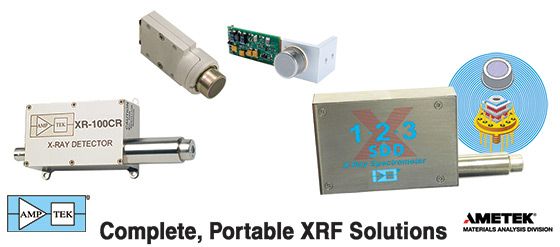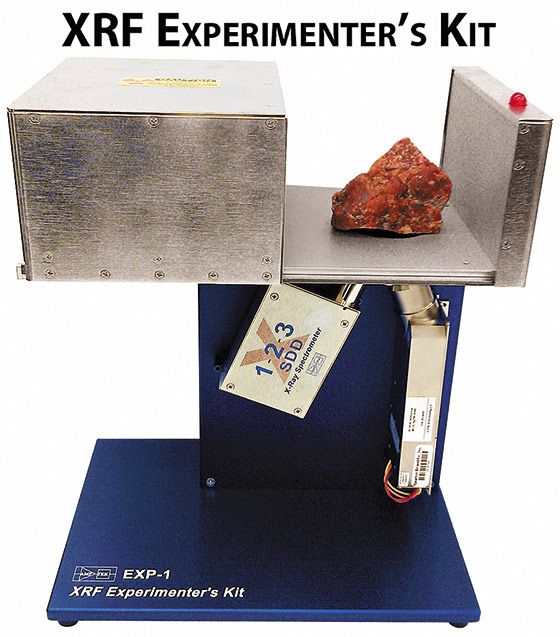Amptek, Inc.
Company Description
Amptek, Inc., is a recognized world leader in the design and manufacture of state-of-the-art X-ray and gamma ray detectors, preamplifiers, instrumentation, and components for portable instruments, laboratories, satellites, and analytical purposes. These products provide the user with high performance and high reliability together with small size and low power.

Chief Spectroscopic Techniques Supported
X-ray fluorescence (EDXRF), direct spectral measurements, EDS XRF, PIXE, and TXRF.
Markets Served
Amptek serves wherever X-ray detection is used; for example, hand-held and table-top XRF analyzers produced by OEMs; research facilities in universities, commercial enterprises and the military; nuclear medicine; space; museums; environmental monitoring; and geological analysis of soils and minerals.
Major Products/Services
Amptek recently brought silicon wafer manufacturing in-house and improved the process. The results are detectors with lower noise, lower leakage current, better charge collection, and uniformity from detector to detector.
The FAST SDD® represents Amptek's highest performance silicon drift detector (SDD), capable of count rates over 1,000,000 CPS (counts per second) while maintaining excellent resolution. The FAST SDD® is also available with our Patented C-Series (Si3N4) low energy windows for soft X-ray analysis.
Amptek has developed a 70 mm2 FAST SDD® Detector in a TO-8 package. This is the same package that is used with all Amptek detectors. This makes the 70 mm2 a drop-in replacement (same package, same pin-out, same voltages). Triple the count rate versus the 25 mm2 SDD with the same performance.
Also offering improved performance are Amptek's SDD and Si-PIN detectors.
Amptek detectors are offered in a wide range of configurations with their Preamplifiers and Digital Pulse Processors (DPP) for complete XRF portable solutions.
Applications
- X-Ray fluorescence
- Process control
- OEM instrumentation
- RoHS/WEEE compliance testing
- Nondestructive analysis with XRF
- Restricted metals detection
- Environmental monitoring
- Medical and nuclear electronics
- Heavy metals in plastics
- Lead detectors
- Toxic dump site monitoring
- Semiconductor processing
- Nuclear safeguards verification
- Plastic & metal separation
- Coal & mining operations
- Sulfur in oil and coal detection
- Smoke stack analysis
- Plating thickness
- Oil logging
- Electro-optical systems
- Research experiments & teaching
- Art and archaeology
- Jewelry analysis
- SEMs

Amptek, Inc.
14 DeAngelo Drive
Bedford, MA 01730
TELEPHONE
(781) 275-2242
FAX
(781) 275-3470
E-MAIL sales@amptek.com
WEB SITE www.amptek.com
NUMBER OF EMPLOYEES
47
YEAR FOUNDED
1977

New Study Provides Insights into Chiral Smectic Phases
March 31st 2025Researchers from the Institute of Nuclear Physics Polish Academy of Sciences have unveiled new insights into the molecular arrangement of the 7HH6 compound’s smectic phases using X-ray diffraction (XRD) and infrared (IR) spectroscopy.
A Seamless Trace Elemental Analysis Prescription for Quality Pharmaceuticals
March 31st 2025Quality assurance and quality control (QA/QC) are essential in pharmaceutical manufacturing to ensure compliance with standards like United States Pharmacopoeia <232> and ICH Q3D, as well as FDA regulations. Reliable and user-friendly testing solutions help QA/QC labs deliver precise trace elemental analyses while meeting throughput demands and data security requirements.